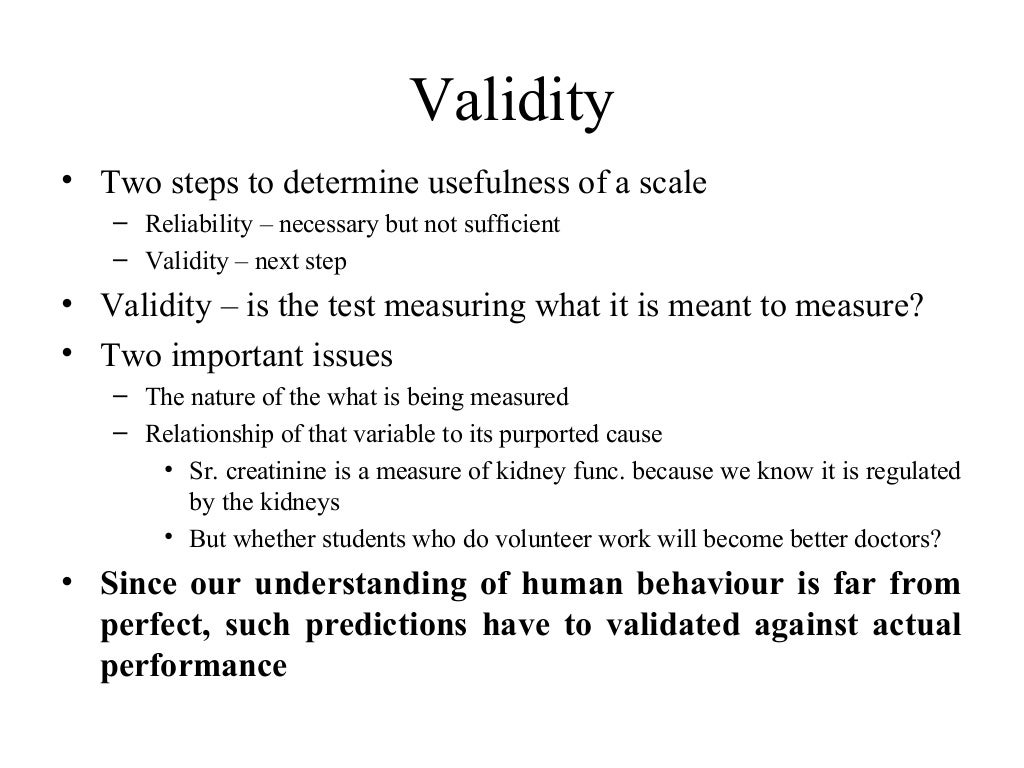
The extent to which a measure is consistent across different administrations The participant’s true score on the measure has not changed (e.g., IQ, personality). You administer a measure to a participant, then wait some period of time, and give them the test again. Here are arguably the four most important types of reliability: Type of Reliability
12.2 What to do when you cannot run an experimentĥ.2 Types of consistency = Types of Reliability. 11.3 p-Values, Effect Size, and Sample Size. 10.7 Mediators and Mediated Relationships. 10.2 Moderating Variables: Interaction Effects. 10 Moderating, Mediating, and Confounding Variables. 9.3 Reading, citing, and evaluating journal articles. 8.5 Carryover Effects and Order Effects.  8.4 Which is better? Between or within?. 8.3 Two ways of creating groups: Between-subjects vs within-subjects design.
8.4 Which is better? Between or within?. 8.3 Two ways of creating groups: Between-subjects vs within-subjects design.  8.2 Why do experiments demonstrate causal relationships?. 8.1 Describe the essential features of experiments and quasi-experiments. 7.4 Which statistics can be used for descriptive methods?. 7.3 Selection threats can affect descriptive methods. 7.2 Qualitative versus quantitative research. 7.1 Distinguish between descriptive methods. 6.4 Conducting an Independent Samples t-Test. 6.2 Null Hypothesis Significance Testing (NHST). 6.1 Descriptive and Inferential Statistics. 5.5.1 Construct validity: When operations don’t match constructs. 5.4 Types of inferences in a study = Types of validity. 5.3 Validity is a property of inferences. 5.2 Types of consistency = Types of Reliability. 4.1 Experimental, Quasi-Experimental, and Non-Experimental Studies. 3.4 Other Variables: Samples and Populations. 3.3 IVs and DVs: Variables in Your Study.
8.2 Why do experiments demonstrate causal relationships?. 8.1 Describe the essential features of experiments and quasi-experiments. 7.4 Which statistics can be used for descriptive methods?. 7.3 Selection threats can affect descriptive methods. 7.2 Qualitative versus quantitative research. 7.1 Distinguish between descriptive methods. 6.4 Conducting an Independent Samples t-Test. 6.2 Null Hypothesis Significance Testing (NHST). 6.1 Descriptive and Inferential Statistics. 5.5.1 Construct validity: When operations don’t match constructs. 5.4 Types of inferences in a study = Types of validity. 5.3 Validity is a property of inferences. 5.2 Types of consistency = Types of Reliability. 4.1 Experimental, Quasi-Experimental, and Non-Experimental Studies. 3.4 Other Variables: Samples and Populations. 3.3 IVs and DVs: Variables in Your Study. 

3 Operational Definitions & Measurement.2.8 The Inductive Method and the Deductive Method.2.6 Three Goals of Psychological Science.








 0 kommentar(er)
0 kommentar(er)
